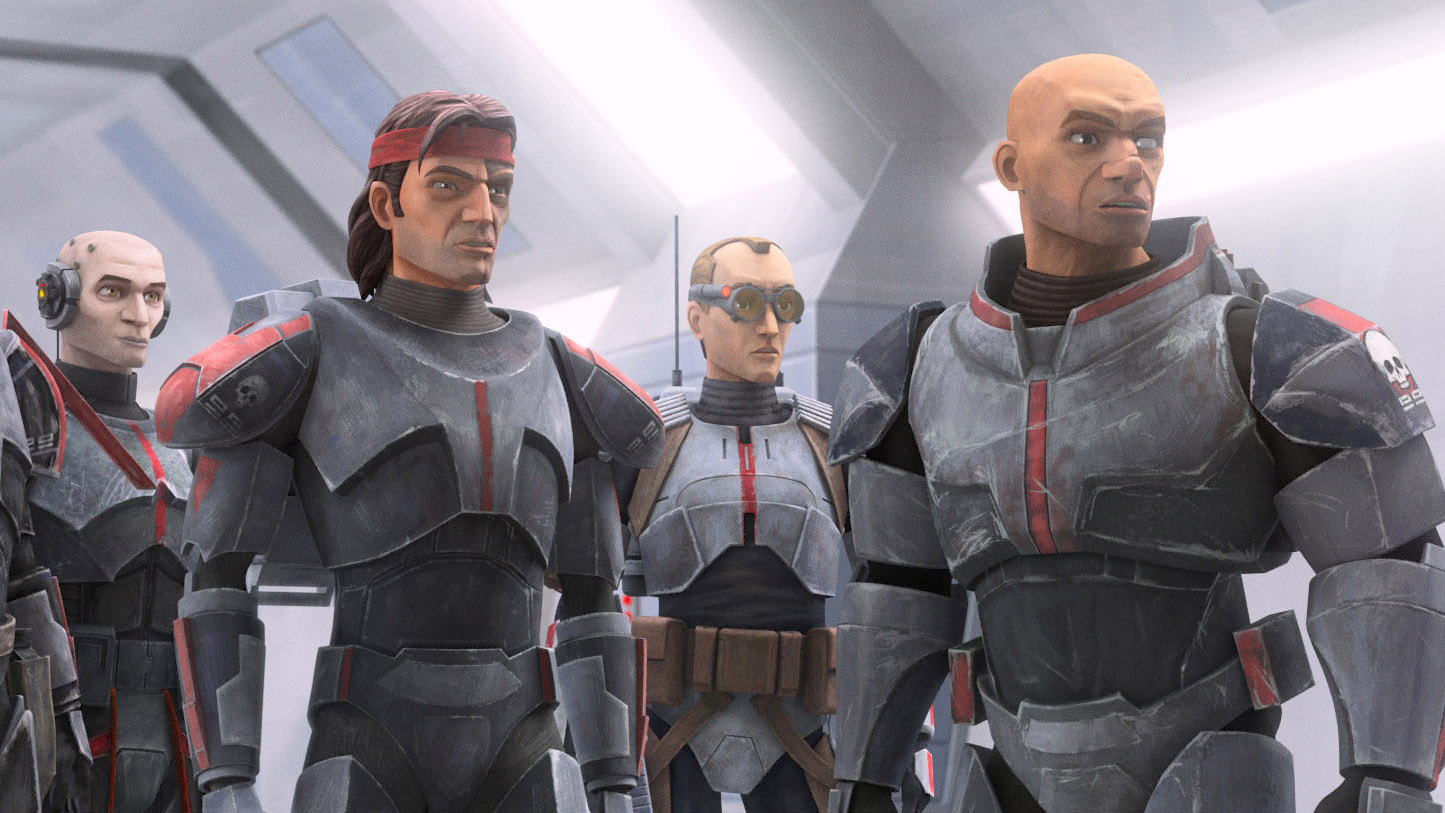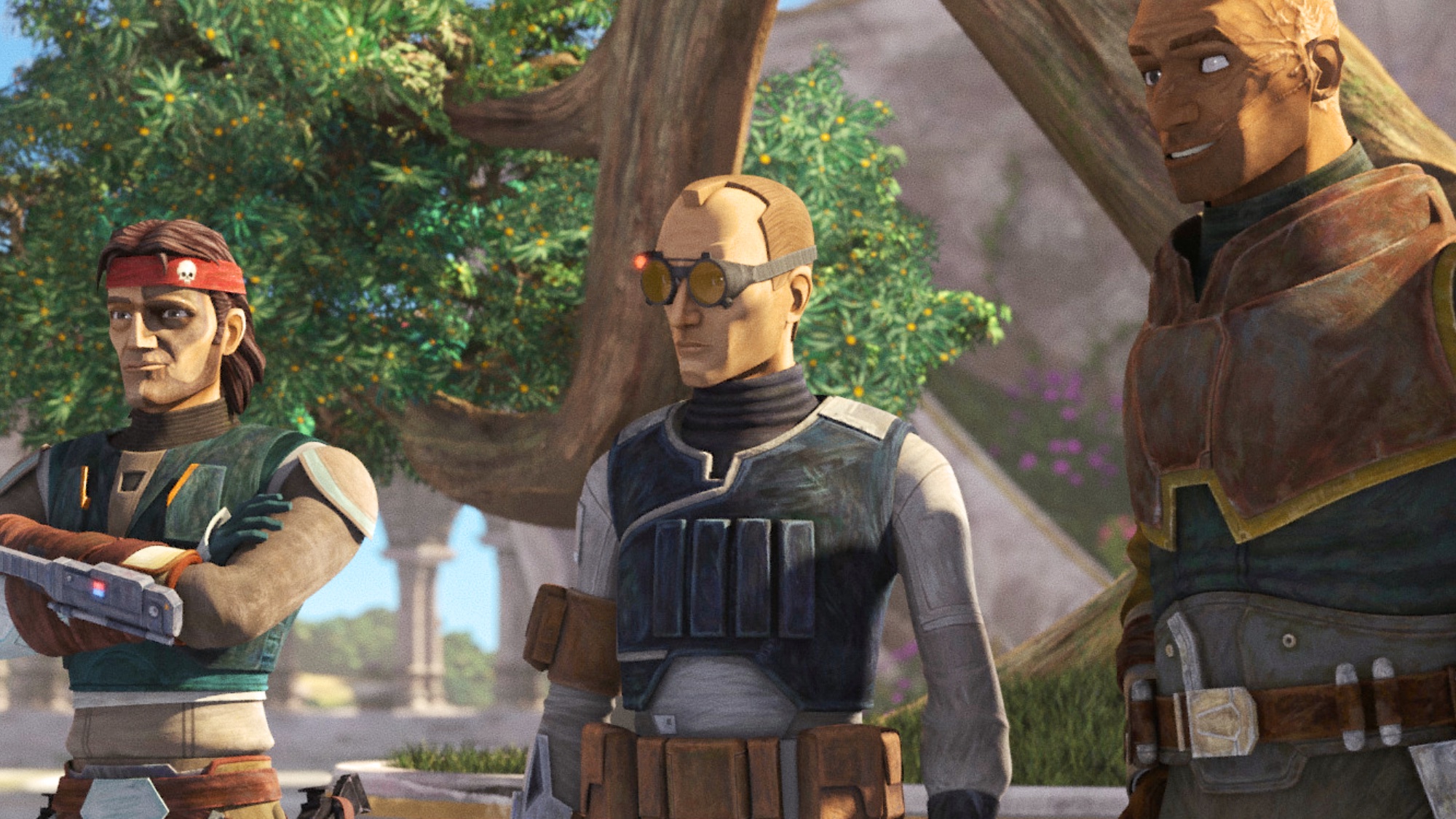
Like many Star Wars fans, I eagerly await each new episode of The Mandalorian season 3. But right after I’m finished watching the adventures of Din and Grogu, I jump right over to another Star Wars show that isn’t getting its day under Tattoine’s twin suns.
Star Wars: The Bad Batch is an animated series that follows a squad of genetically modified Clone Troopers, Clone Force 99, in the aftermath of the fall of the Republic. Unlike the rest of the clones, each member of Force 99 has had his DNA altered to heighten one or more abilities: Hunter has enhanced senses, Tech has above average intelligence; Wrecker has brute strength; and Crosshair has incredible eyesight and marksmanship.
Things pick up right as Palpatine issues Order 66 — the directive for the clones to execute all the Jedi. However, due to their genetic modifications, the inhibitor chip placed in every clone fails to work properly, and so Force 99 questions the order, and soon finds themselves on the run from the Empire. As they make their way across the galaxy, they’re confronted with the aftermath of the fall of the Republic, and just what that means for everyone under its rule.
Expanding the Star Wars universe in a meaningful way
One reason Bad Batch succeeds where other interstitial series and movies have failed — I’m thinking specifically of Solo and Kenobi — is that they only filled in the gaps for a few individuals. Bad Batch, on the other hand, shows the greater ramifications of the Republic’s collapse and the Empire’s grand plans. It’s the same reason why Andor, which takes place in the same time period, also works.
One reason Bad Batch succeeds where other Star Wars series and movies have failed — Solo and Kenobi — is that they only filled in the gaps for a few individuals. Bad Batch shows the greater ramifications of the Republic’s collapse and the Empire’s grand plans.
With each thud of a Stormtrooper’s boot, we see how the designs of Palpatine ripple through the galaxy and affect citizens in ways you might not have thought.
Similarly, we see the aftermath of the Empire’s collapse, and how it has left power vacuums throughout the various systems, in The Mandalorian. Whereas Solo and Obi-Wan increased our knowledge of a handful of people, Bad Batch deepened our understanding of the Star Wars universe.
It’s cool to see how Boba Fett was able to get out of the Sarlacc pit, but did you ever wonder why the Empire no longer uses clones? And what happens when Stormtroopers age out of the military?
It doesn't feel like homework

Bad Batch rewards those who are familiar with the entire Star Wars saga — Easter eggs abound — and also provides plenty of thread to tie into not just the original trilogy, but also to the final three films, especially The Rise of Skywalker. But unlike the latest Marvel movies, the Bad Batch doesn’t give me the feeling as if I had to watch it in order to understand what’s going on elsewhere.
Bad Batch is an interesting contrast to The Mandalorian which, for all its action, doesn’t go as deep emotionally.
However, it does help to be familiar with Clone Wars, the animated series which immediately precedes Bad Batch, and the series in which Clone Force 99 was introduced.
Bad Batch also goes much darker than other Star Wars shows and movies; there’s a greater sense of loss throughout the series as the band tries to figure out where they belong. It’s an interesting contrast to The Mandalorian which, for all its action, doesn’t go as deep emotionally.
Star Wars: The Bad Batch just finished its second season on a pretty big cliffhanger. There was a gap of a year between the first season and the second, and I hope I don’t have to wait until 2025 to find out what happens next.







